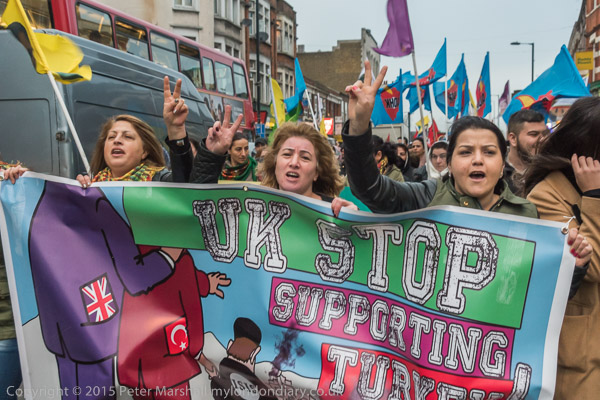
Seven years ago on February 7th 2016 I made my way on a Sunday afternoon to Edmonton in north London. I don’t now much like working on Sundays, when I often go out for a walk with my wife and catch up with things from the week that’s just ended. And public transport, on which I rely to get into and around London is often disrupted by engineering work on the railways and poorer or non-existent bus services.
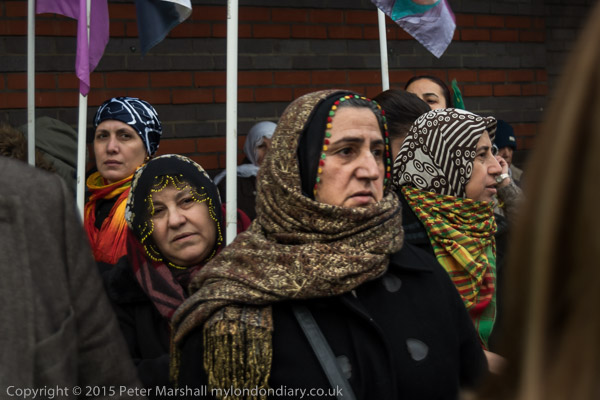
But the trains and underground on that day took me smoothly if rather slowly to Silver Street from where it was just a short walk along the street to the corner with Fore Street where Kurds were meeting up for a march. Angel Road is now I think the underpass which carries most of the traffic along the North Circular under this junction, but this is still the Angel junction.
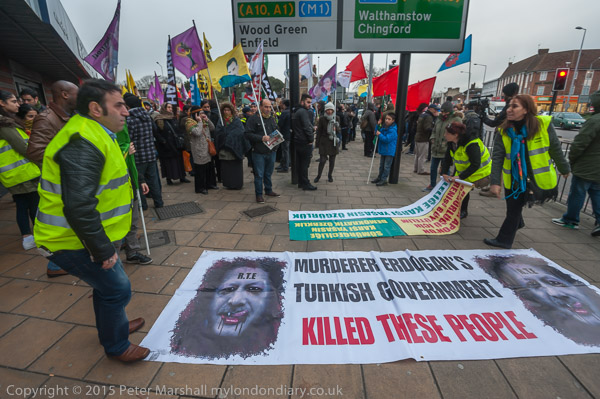
I’d responded to an invitation to cover the event with the title ‘End the siege of North Kurdistan! Turkey out of Rojava!’ which read (in part) “Kurdish, Turkish and left organisation call on the unions, left, progressive, feminist and antifascist groups of London to join a march through the heart of the community from Upper Edmonton to Haringay. We are calling for the end of the siege of the Kurdish regions by the Turkish army, and the withdrawal of Turkish troops from Rojava. We must show our solidarity with the resistance and popular assemblies in both regions, and build our links with this heroic and inspiring movement.”
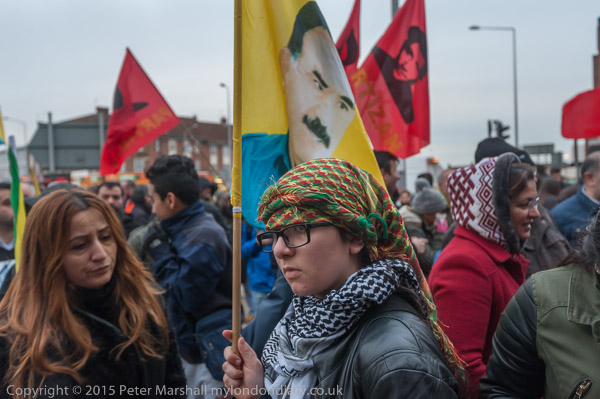
The time given for the protest was 16:00 and I’d arrived a little before 4pm, hoping to take as many pictures as possible before the light faded. Sunset here in early February is just before 5pm, not that there was much if any sign of the sun on that dry but very overcast day. By the time the march moved off a little after 4.30pm the light was dropping fast, and before long I was working at ISO 2000 and 3200 on the two Nikons I was using. Even then many pictures were a little blurred due to people moving at walking pace.
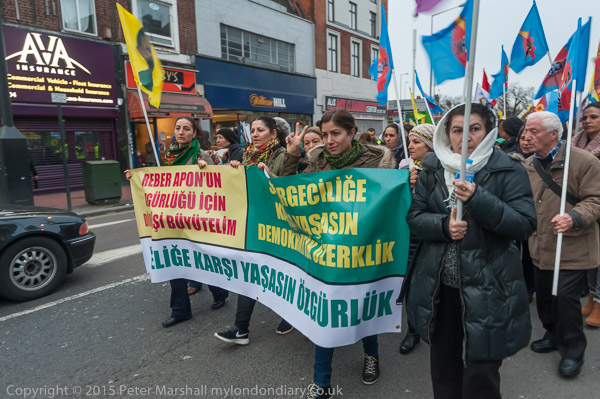
On My London Diary I write more about the groups involved and the reasons for the protest. Almost all those on the march were from Kurdish groups and as I commented “Apart from a banner from the Paddington Branch of the RMT there was no presence from the British left, who don’t appear to have woken up to what is happening in Turkey and in Kurdistan.”
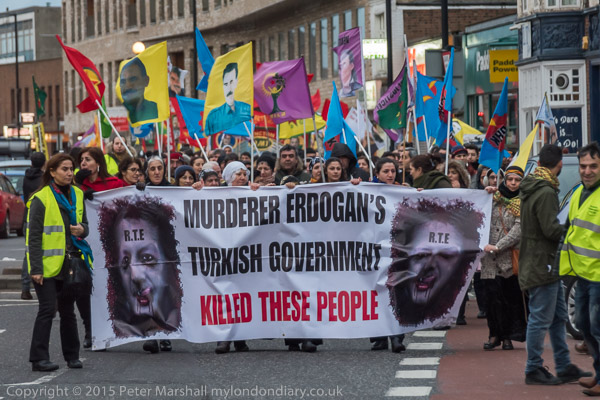
Our governments too over the years appear to have kept a deliberately blind eye to events in Turkey, standing up for it as a member of NATO rather than standing up to it and supporting the human and civil rights of the Kurds, who have long been oppressed.
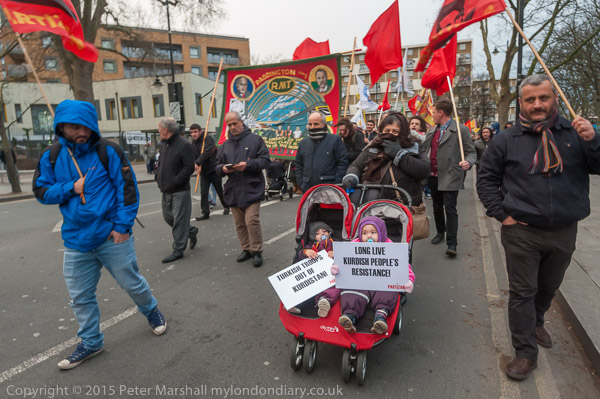
Things got worse in Turkey after the success of Recep Tayyip Erdogan’s AKP party in the June 2015 elections with curfews, the imposition of martial law, and arrests of anyone opposed to the Turkish government, with attacks by tanks and artillery, and snipers targeting homes, killing more than 400 civilians in the last 7 months. Politicians, human rights activists, journalists, students and 30 mayors had been imprisoned and hundreds of thousands have been threatened and forced to flee their homes.
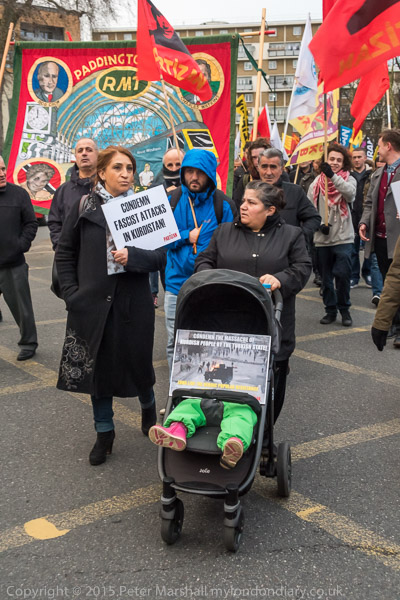
Britain and the EU have turned that blind eye to the support of Turkey for ISIS, aiding them to smuggle oil whose sale finances their activities. Kurds have led the fight against ISIS and Turkish attacks on them have hindered them.
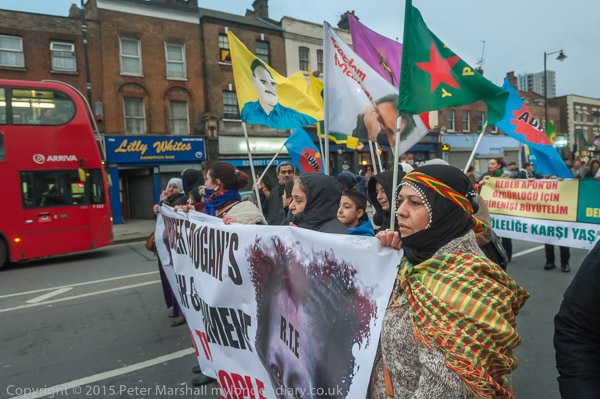
Since 2016 the situation in Kurdish areas of Syria has worsened with Turkish forces invading parts of the area with the help of former ISIS fighters in 2018. Hundreds of Kurds were killed and Turkey has instituted a policy of ethnic cleansing, depopulating the area. The remaining Kurds face death, extortion, and kidnappings by various armed groups backed by Turkey. Kurdish-owned homes and farms are confiscated, and new settlements for non-Kurds are being built.
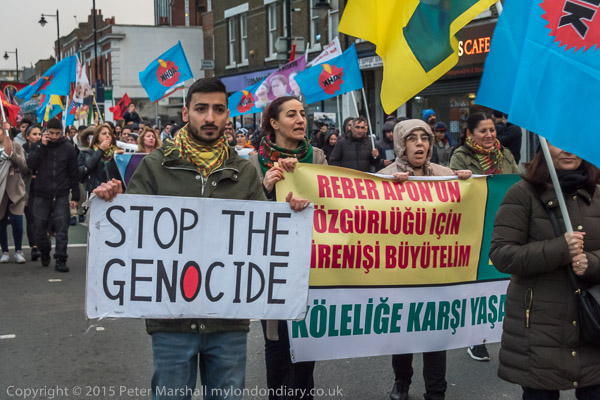
I left the march shortly after it passed White Hart Lane. I was getting tired and it was getting too dark to take more pictures without flash, and I thought I had done enough.
More at Kurds protest Turkish State attacks on My London Diary.




























